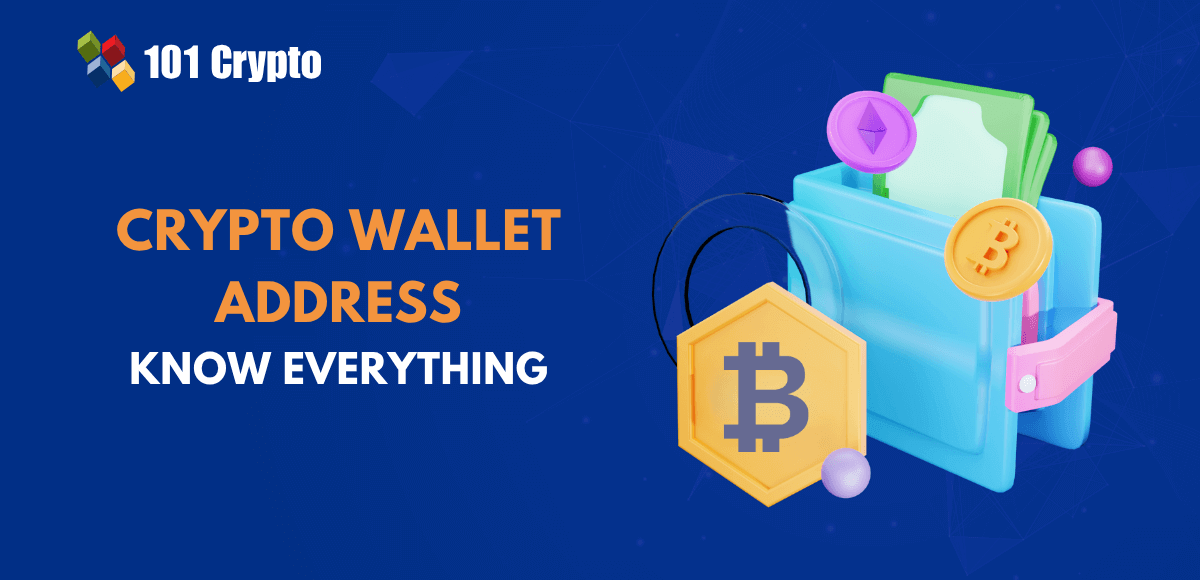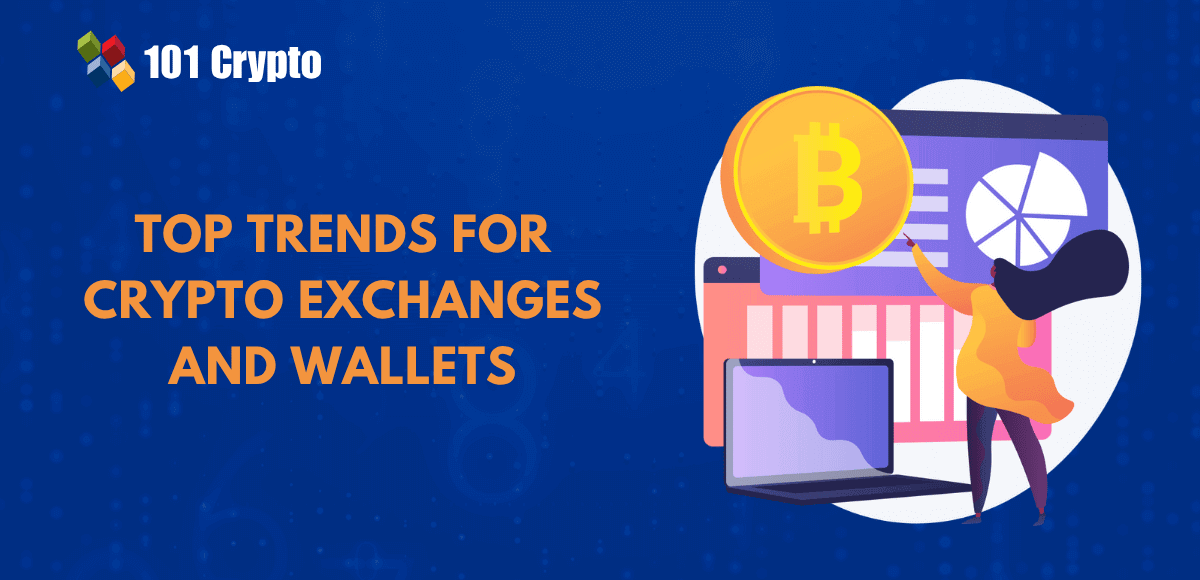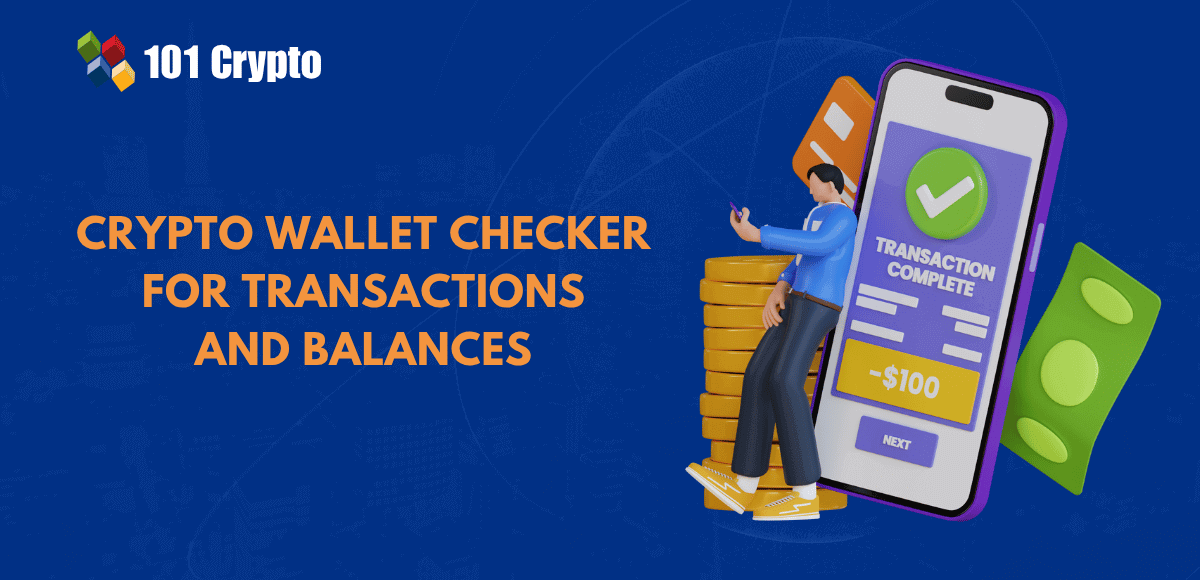Crypto wallets have emerged as the ideal solutions for storing, sending and receiving cryptocurrencies. However, beginners need a crypto wallet address guide to understand how to interact with cryptocurrencies through their wallets. Imagine your crypto wallet as a digital mailbox where you receive your cryptocurrencies from other people. The address to the mailbox is your wallet address, a string of numbers and alphabets, which other people can use to send you cryptocurrencies.
Beginners might find the wallet addresses big, weird, and difficult to understand. On top of it, you must also consider the fact that each coin uses a different address format, which can be daunting for newcomers. Let us learn about the wallet address in crypto, how it works, and how to find your wallet address. This guide will offer examples of crypto wallet addresses in different formats and help you discover how to use the wallet address safely.
Enroll now in the Bitcoin Fundamentals Free Course to gain deep insights on how the Bitcoin blockchain works.
What is a Crypto Wallet Address?
The crypto wallet address is a unique combination of letters and numbers that comes from the public key of your wallet. Think of it like your email inbox address-but instead of text, it collects Bitcoin, Ethereum, USDT, and other digital coins.
Every digital wallet gets its own unique address on a particular blockchain. For instance, a Bitcoin address is set up only to collect Bitcoin. If you accidentally forward Ether to that same address, your coins will probably vanish.
The wallet address is important for crypto users due to the following reasons:
- It tells other people where they can send cryptocurrencies to a specific wallet.
- You can share it with anyone without any concerns of losing your crypto.
- The wallet address doesn’t reveal your private key or real identity.
How do Crypto Wallet Addresses Work?
Crypto wallets use public-private key cryptography to keep your cryptocurrencies safe from unauthorized access. Each wallet creates a pair of keys, the public and private key. The public key is a long string, which serves as your wallet address. The private key protects your crypto and allows only you to spend the crypto assets in your wallet. When someone has to pay you in crypto, they can send a transaction to your wallet address. The blockchain checks the public key and after verifying the transaction, adds the new crypto to your wallet.
The most interesting thing about the wallet address is that it comes from the public key. No one can use reverse engineering to extract your private key from the wallet address. You must know that the public-private key cryptography serves a major role in strengthening crypto security.
Crypto Wallet Address Guide: Types of Wallet Addresses
As you navigate the world of cryptocurrencies, you will find that not all crypto wallet addresses look alike. Every blockchain has its own format for generating public and private keys. The following crypto wallet address examples can help you recognize the difference in wallet addresses for different blockchain protocols.
-
Bitcoin (BTC)
Format: Starts with 1, 3, or bc1
Examples:
Legacy: `1A1zP1eP5QGefi2DMPTfTL5SLmv7DivfNa`
SegWit: `3J98t1WpEZ73CNmQviecrnyiWrnqRhWNLy`
Native SegWit (Bech32): `bc1qar0srrr7xfkvy5l643lydnw9re59gtzzwfzn0f`
-
Ethereum (ETH)
Format: Starts with 0x and is 42 characters long
Example: `0x742d35Cc6634C0532925a3b844Bc454e4438f44e`
-
Solana (SOL)
Format: A Base58 string with 44 characters
Example: `5eykt4UsFv8P8NJdTREpY1vzqKqZKvdpGZ59`
-
Binance Smart Chain (BSC)
Format: Identical to Ethereum
Example: `0x3f16c8a233ce9e57479e6f896da643e8d11cdb7f`
Each address format links to its own blockchain protocol. If you send cryptocurrencies with the wrong address format, then you may lose them permanently.
How to Check Your Crypto Wallet Address Step-by-Step
Many of you might have assumed that finding crypto wallet addresses will be a daunting task. On the contrary, you can use a few simple steps to find your wallet address. You can find the answers to “How do I find my crypto wallet address?” only by identifying the type of wallet you use. The following sections show you how to find your wallet address in different types of wallets.
1. Mobile or Desktop Wallets (e.g., Trust Wallet, Exodus)
- Open the wallet app.
- Select the cryptocurrency you want to receive.
- Tap “Receive” or “Deposit.”
- Your wallet address will be displayed as a string and QR code.
2. Hardware Wallets (e.g., Ledger, Trezor)
- Connect your device to your computer or phone.
- Open the wallet app and unlock the device.
- Select the coin.
- Use the device to verify and display your address securely.
3. Exchange Wallets (e.g., Binance, Coinbase)
- Go to the “Wallet” or “Funds” section.
- Select the coin.
- Click “Deposit” to reveal your wallet address.
Differences in Crypto Wallet Addresses
Beginners would think that all crypto wallet addresses are essentially the same with numbers and alphabets. An overview of real crypto wallet addresses can help you discover the subtle differences between them.
Here is an example of an Ethereum wallet address:
'0xde0B295669a9FD93d5F28D9Ec85E40f4cb697BAe`
Now, take a look at the following example of a Bitcoin wallet address:
`bc1qw4rg4p6wdcne77t5x5ez4aqcddvdlcq36afkjj`
You can notice how the Ethereum wallet address uses `0x` and the Bitcoin wallet address uses `bc1` at the start. The prefixes and length of the wallet address can help you identify which blockchain is associated with the address. Always remember that you should never edit, reformat, or trim a wallet address as the smallest error might drain your crypto permanently.
Crypto Wallet Address Format: Common Patterns and Pitfalls
The consequences of using wrong wallet addresses call for in-depth knowledge of the crypto wallet address format for different blockchain protocols. You should pay attention to the following rules for the format of crypto wallet addresses on different chains.
Bitcoin
- Addresses starting with 1 are older formats (Legacy).
- Those with 3 are SegWit addresses.
- bc1 is the modern Bech32 format—lower fees, better efficiency.
Ethereum / BSC
- Always starts with 0x
- Case-insensitive
- Length: 42 characters (including 0x)
Solana / Avalanche / Cardano
- Alphanumeric only (no prefix like 0x)
- Length varies between 40–50 characters depending on the network.
Don’t Mix Networks
Have you sent ETH to a BTC address? It won’t reach the right wallet. You must always check the blockchain type and the address format before you hit send. Countless people have lost their crypto due to wrong wallet address formats.
Crypto Wallet Address Checker: How to Verify an Address
Before you transfer a large amount of crypto, take a moment to confirm where it is going. You can rely on a crypto wallet address checker to ensure easier and safer transactions. The wallet address checker helps you find out whether a specific address follows the valid format. The address checker also helps in viewing wallet balance and transaction history on public blockchain networks.
You can use tools such as blockchain explorers for individual protocols to check wallet addresses. Some of the most popular blockchain explorers include blockchain.com, etherscan.io and solscan.io. Crypto users can also rely on dedicated wallet checkers such as CoinTools and BitRef to verify crypto wallet addresses. Using a crypto wallet address checker is especially useful before sending funds to a new contact or business.
The most interesting thing about wallet address checkers is that you can use them with the following three steps.
- Copy the wallet address.
- Paste it into a blockchain explorer or checker.
- Confirm activity, token type, and associated transactions.
How to Use a Crypto Wallet Address Safely
You can capitalize on the following tips to use your crypto wallet address without any issues:
- Never share your private key: Your wallet address is public; your private key belongs only to you.
- Double-check addresses: Malware can swap clipboard data, so always compare before you hit send.
- Use QR codes when possible: Scanning a square is faster and carries fewer typo risks than typing long strings.
- Label addresses in your wallet: Give nicknames to regular contacts so you pick the right one every time.
- Test with a small amount first: Send a tiny fraction when using a new address or network to confirm that it works.
Final Thoughts
Knowing how to use your crypto wallet address is a big step toward safe crypto management. That address is what lets you receive funds, and it matters in every deal you’ll ever make in the crypto space. At first, those jumbled letters and numbers seem tricky. However, they become an integral part of your crypto journey once you learn the basics. You must understand different formats for crypto wallet addresses and examples to discover how they work. After completing the fundamentals, you can learn crucial tips to use wallet addresses safely. Learn more about crypto fundamentals and start receiving cryptocurrencies in your wallet address now.
Disclaimer
The article should not be taken as, and is not intended to provide any investment advice. Claims made in this article do not constitute investment advice and should not be taken as such. 101 Crypto shall not be responsible for any loss sustained by any person who relies on this article. Do your own research!







